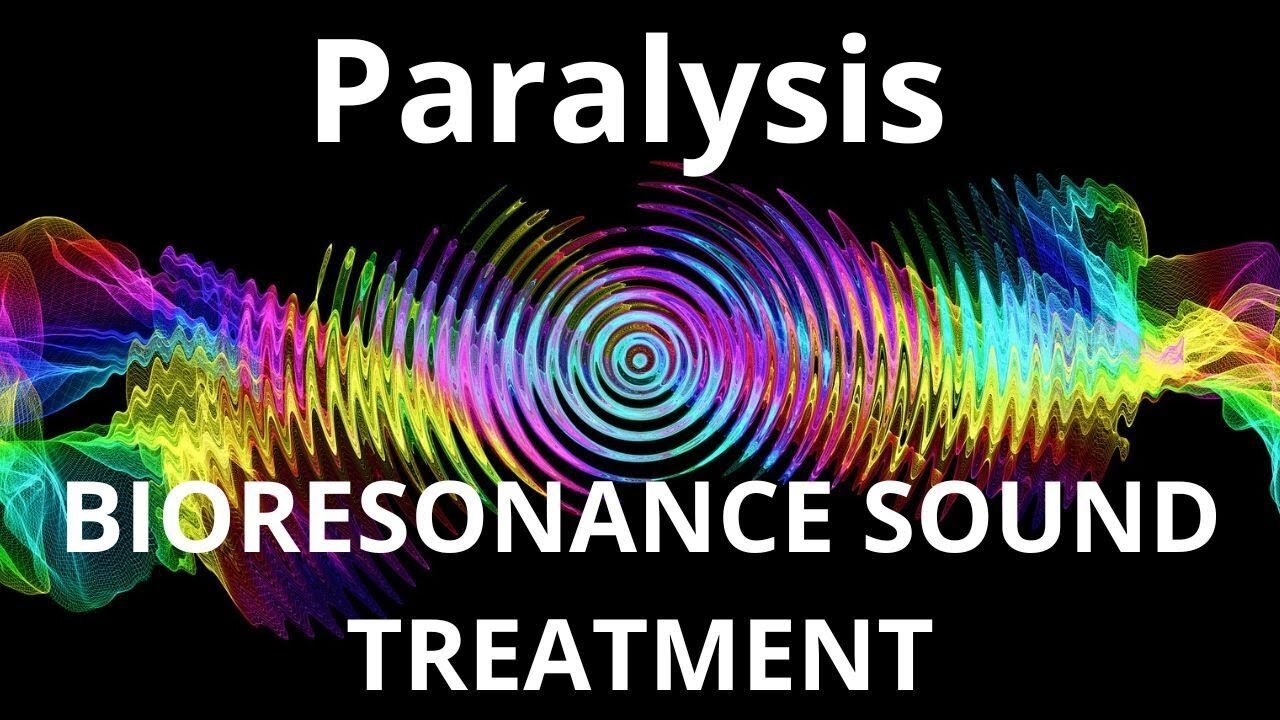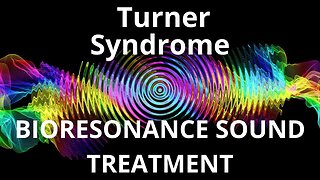Premium Only Content

Paralysis_Session of resonance therapy_BIORESONANCE SOUND THERAPY
When something disrupts nerve signals to muscles, you may experience paralysis — being unable to make voluntary movements. Common causes of paralysis include strokes, spinal cord injuries and nerve disorders like multiple sclerosis. Bell’s palsy causes temporary facial paralysis. Paraplegia involves both legs, while quadriplegia affects all limbs.
Some people experience temporary paralysis and regain partial or full movement over time. For example, Bell’s palsy temporarily paralyzes facial muscles. Palsy is the name for paralysis accompanied by tremors.
Permanent paralysis means you never regain muscle control. The condition is irreversible.
Paralysis can affect any part of the body. It can be:
Partial (paresis): You can control some muscles, but not all.
Complete: You have no control over any muscles.
Paralysis can also be broken down into two types based on the site of injury in the nervous system:
Flaccid: Your muscles get flabby and shrink.
Spastic: The muscles tighten, causing uncontrollable jerks and spasms (spasticity).
Localized paralysis affects a small section of the body. It most commonly affects the face, hands, feet or vocal cords.
Generalized paralysis affects a larger area. Healthcare providers categorize generalized paralysis based on the extent of paralysis:
Diplegia: Paralysis occurs on the same area on both sides of the body. For example, paralysis affects both arms, both legs or both sides of the face.
Hemiplegia: Paralysis affects one side of the body (an arm and a leg on the same side).
Monoplegia: You can’t move one limb (arm or leg).
Paraplegia: Paralysis affects both legs and sometimes the torso.
Quadriplegia (Tetraplegia): Paralysis involves all limbs. People with quadriplegia may have little or no movement from the neck down.
A problem with the nervous system causes paralysis. The nervous system is your body’s command and communication system. It sends signals from the brain throughout your body, telling it what to do. If something damages the nervous system, messages can’t get through to muscles.
Some people are born with birth defects like spina bifida that cause paralysis. More often, a traumatic injury or medical condition damages muscle and nerve function.
Strokes and spinal cord injuries are the top causes of paralysis. Other causes include:
Autoimmune diseases, including multiple sclerosis (MS) and Guillain-Barré syndrome.
Brain injuries, including conditions like cerebral palsy.
Neurological diseases, such as amyotrophic lateral sclerosis (ALS).
If you have paralysis, you are partly or entirely unable to move the affected parts of the body. Paralysis may be accompanied by a loss of sensation depending on the location of the injury. Strokes and spinal cord injuries cause sudden paralysis.
Some medical conditions can cause gradual paralysis. You may experience:
A steady loss of feeling and muscle control.
Muscle cramps.
Tingling or numbness in limbs.
Music affects a person, it can calm and cheer up, sounds can heal. The therapeutic effect is due to the frequency fluctuations of various sounds that resonate with various organs of the body. Sounds have bioresonance compatibility with the vibrations of human internal organs, which is the basis of the positive effect of sound treatment. The sound vibrations of music trigger many mechanisms of higher nervous activity in the patient's subconscious and start the healing process.
Sound therapy does not replace medical treatment, but complements it, improves the positive dynamics of treatment and speeds up recovery.
TO ACHIEVE A POSITIVE RESULT, DAILY LISTENING TO VIDEOS IS REQUIRED.
I wish you health and prosperity!
You can purchase unique medicines in my store:
https://store11998180.company.site/
You have the opportunity to support the channel:
https://destream.net/live/RadSiarAl/donate
-
 32:03
32:03
BIORESONANCE SOUND THERAPY
1 month agoTurner Syndrome _ Sound therapy session _ Sounds of nature
1761 -
 LIVE
LIVE
Vigilant News Network
9 hours agoBombshell Study Reveals Where the COVID Vaccine Deaths Are Hiding | Media Blackout
2,158 watching -
 1:17:59
1:17:59
Sarah Westall
4 hours agoDOGE: Crime & Hysteria bringing the Critics & the Fearful - Plus new CDC/Ukraine Crime w/ Dr Fleming
15.7K2 -
 45:39
45:39
Survive History
10 hours ago $2.10 earnedCould You Survive in the Shield Wall at the Battle of Hastings?
14.6K5 -
 1:50:28
1:50:28
TheDozenPodcast
9 hours agoViolence, Abuse, Jail, Reform: Michael Maisey
34K1 -
 23:01
23:01
Mrgunsngear
1 day ago $3.53 earnedWolfpack Armory AW15 MK5 AR-15 Review 🇺🇸
42.2K12 -
 25:59
25:59
TampaAerialMedia
1 day ago $1.19 earnedUpdate ANNA MARIA ISLAND 2025
22.3K3 -
 59:31
59:31
Squaring The Circle, A Randall Carlson Podcast
11 hours ago#039: How Politics & War, Art & Science Shape Our World; A Cultural Commentary From Randall Carlson
17.4K2 -
 13:21
13:21
Misha Petrov
11 hours agoThe CRINGIEST Thing I Have Ever Seen…
14.5K37 -
 11:45
11:45
BIG NEM
7 hours agoWe Blind Taste Tested the Best Jollof in Toronto 🇳🇬🇬🇭
9.1K